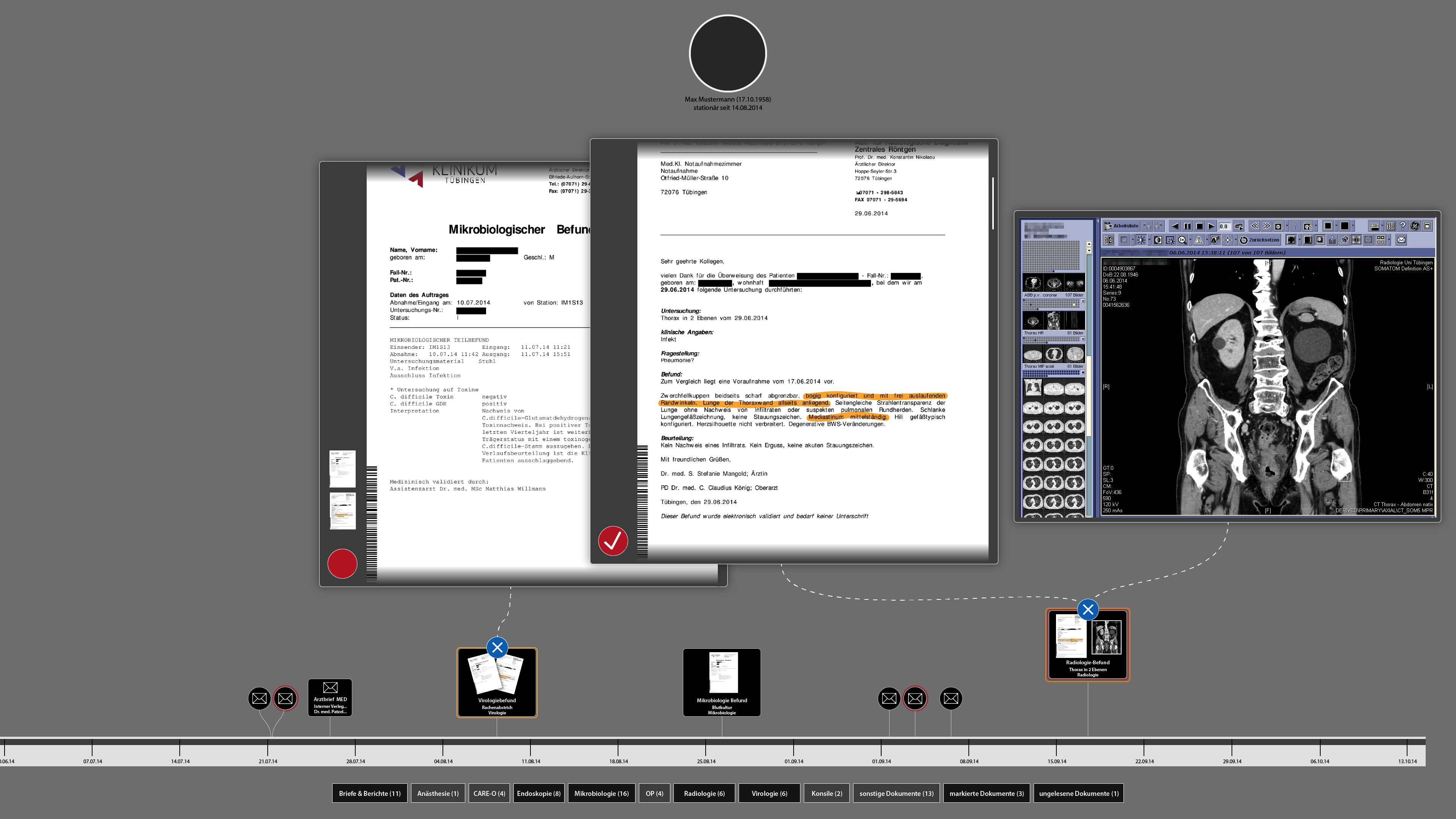The Interactive Ward Round Table – A Cognitive Interface for the Integration of Multiple Documents in Medical Team Meetings
Project description
The preparation of the daily ward round is a demanding task for a medical team: Multiple different documents such as indications, laboratory results, reports, doctor letters, radiology images, etc. have to be integrated into decisions about the diagnoses and treatments for each patient. Medical information systems play a central role in this process. They provide access to hundreds of medical documents. However, only a few documents can be discussed within the available time for each patient. Yet, medical information systems typically are not optimized to separate relevant from irrelevant documents and to integrate several sources of information into a coherent whole. Moreover, they typically are single-user applications.
In the present project we aim at designing and implementing a new cognitive interface that supports medical experts in their cognitive processes related to reading, evaluating, and integrating multiple documents when preparing for and conducting ward rounds. Specifically, we aim at developing an interactive multi-touch table interface on which multiple documents can be simultaneously displayed and compared. When designing the cognitive interface, we will build on the documents model framework by Britt and colleagues (e.g., Britt & Rouet, 2012), an established theoretical framework that describes the mental representations that individuals create when they process multiple documents on a complex issue. Our cognitive interface will allow externalizing parts of these mental representations, specifically information regarding the documents’ relevance and the relationships between documents (e.g. through the possibility to filter and group documents or to mark or annotate them). Thereby, we aim at reducing the amount of time and cognitive resources needed by medical experts to find the right diagnosis or to decide on a treatment. Implemented as a multi-user application with intuitive multi-touch movements such as rotating, sliding or zooming, our system also offers opportunities for group discussions during ward round preparation. In three lab experiments we will test core features of the cognitive interface and respective assumptions. Additionally, in a usability study the new prototype will be compared with a standard system currently in use at the Medical University Clinic Tübingen.

Project Team
- Dr. Yvonne Kammerer, IWM
- Prof. Dr. Michael Bitzer, Innere Medizin, Universitätsklinikum Tübingen
- Prof. Dr. Peter Gerjets, IWM
- Dr. Uwe Oestermeier, IWM
- Caroline Leroy, IWM
